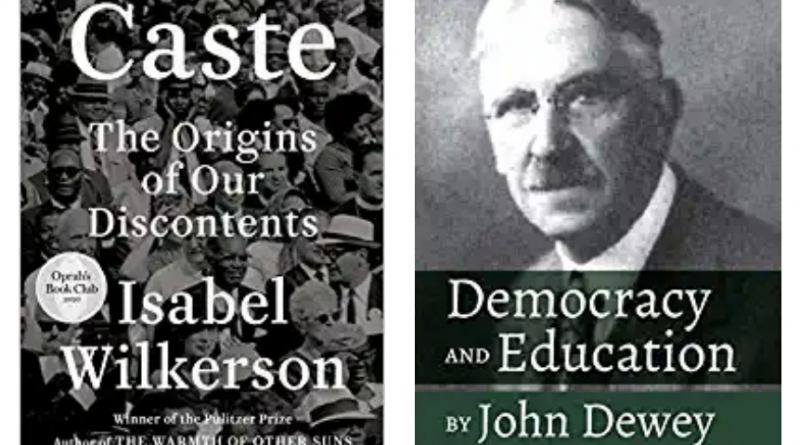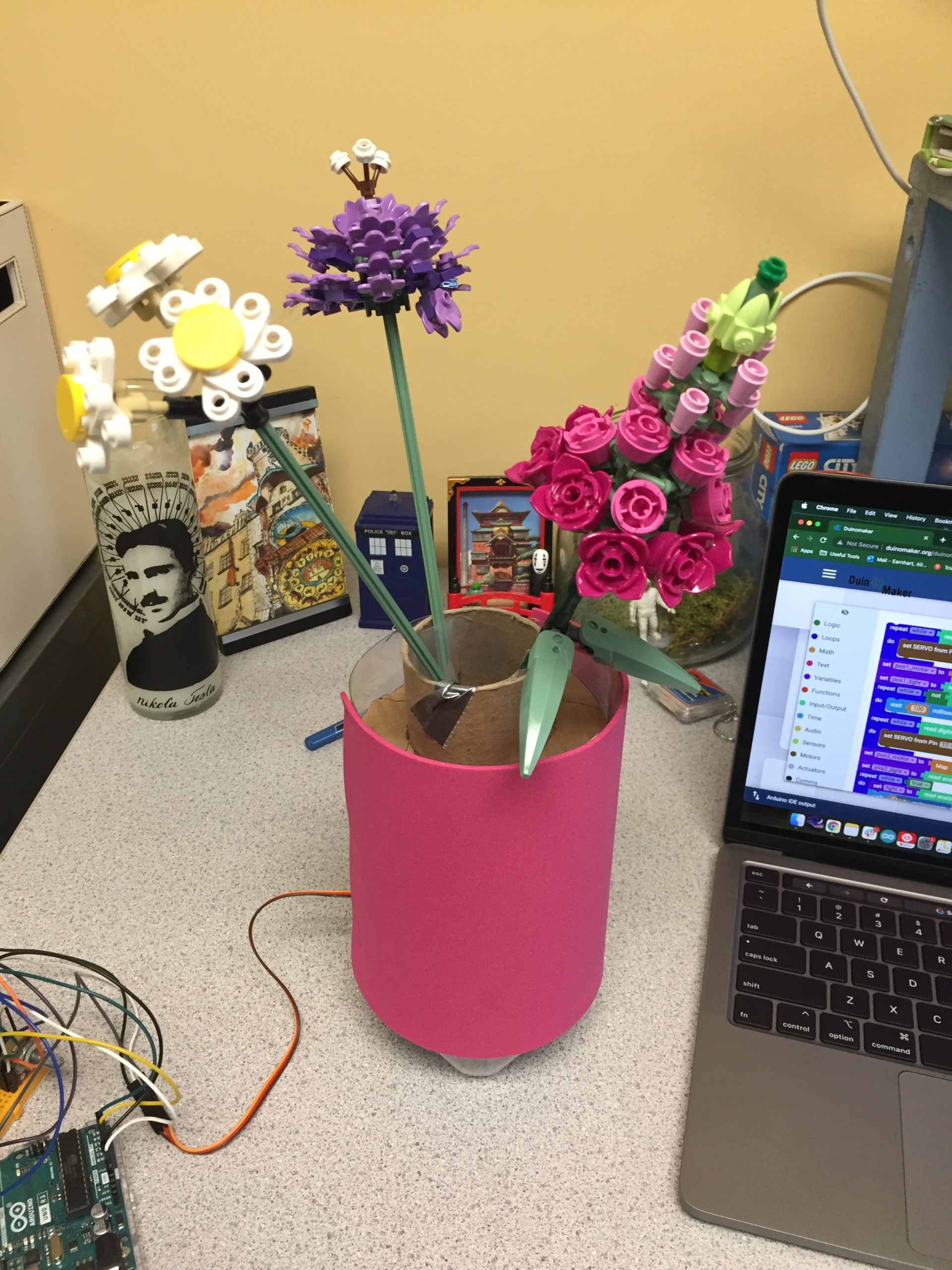Eight Pillars of Caste – Part I
A community of educators in Nepal
We just started a small community of educators in Kathmandu. As a part of this community’s activities, I facilitated a critical reading session over Zoom on October 29. As Dipeshwor had suggested, we decided to focus on social issues for a few weeks, so we decided to read “Caste” by Wilkerson. In parallel, I was reading “Democracy and Education” where Dewey talks about differences between lived experience and what gets taught in formal education and I felt like caste is one relevant example of this. In formal education, caste-based discrimination is a punishable offense but in everyday experiences, people are still discriminating against lower castes, and with no consequences. I also felt like this reading would add value to this community of teachers if they connected social issues to their role as an educator.
We shared the reading a week before the scheduled session. While wandering around the eight pillars, I also read a few articles on caste, among which “There is no Dalits cuisines” is one I would recommend to everyone. Even though I had known and used the word for decades, I learned that Dalit means “broken” or “shattered” and was first used by an Indian activist Jyotirao Phule in 1873.
Eight pillars in caste presented how everyday experiences we already know in a very simple way are strong foundations of the caste system. The author presented examples mostly from India and America. As a reader from the East, examples of discrimination in the Western context were more surprising to me. As Dipesh wrote in his summary “In general, people think that developed countries like the US don’t have issues such as caste. I’ve heard that people have converted to Christianity for that very reason. But it seems like it is still prevalent in the US and different cultures hold on to the pillars of caste to stay in power.” It made me feel like caste based descrimination exists because we are unaware of the descrimination happening around us until it makes big news. Are we the ones normalizing descrimination?
Here is how the session went
Almost everyone joined the session on time. I presented a short summary of the first four pillars, considering we would be doing another session for the remaining four pillars.
- Divine will and the laws of nature
- Heritability
- Endogamy and the control of marriage and mating
- Purity versus pollution
Activity 1: Note down Interesting/Inspiring/Insightful/Surprising sections from the reading.
Participants were asked to note down noteworthy sections from the reading. I gave them some time to go through those sections from the book and rate the seriousness of the discrimination on a scale of 1 to 10 (Serious discrimination: 10, Does not look like discrimination: 1). None of the sections got less than 6 on the scale. Participants felt most of them represented serious discrimination. Here are some examples.
| Sangden: The next day, the girl’s father and two other white men dragged Willie James and his father to the banks of the Suwannee River. They hog-tied Willie James and held a gun to his head. They forced him to jump and forced his father at gunpoint to watch him drown. Held captive and outnumbered as the father was, he was helpless to save his only child.(p. 114) Suresh: 10, Rupak:10x, Dipesh: 10, Sunoj: 10 |
| Suresh: Endogamy, in fact, makes it more likely that those in the dominant caste will see those deemed beneath them as not only less than human but as an enemy, as not of their kind, and as a threat that must be held in check at all costs. (p. 111 ) Sangden: 9, Dipesh: 10, Rupak: 8, Sunoj: 9 |
| Sunoja sixteen-year-old African-American girl thought about what should befall Hitler. She won the student essay contest with a single sentence: “Put him in a black skin and let him live the restof his life in America.” Sangden: 10xxxxxxx, Dipesh: 8, Suresh: 8 |
The score presented how dissatisfied we were with the caste system and everyone seemed to agree that it is a serious crime against humanity. The discussion revolved around the following two sections from the chapter.
- A girl’s response to “What to do with Hitler after the War?” “Put him in a black skin and let him live the rest of his life in America.” There was a mixed feeling about it among the participants, some said: what Hitler did to the people is not comparable to anything else and some said discrimination based on caste/race is as serious as Hitler’s crime. But, all the participants agreed that the girl’s response carried an important message about how she had experienced racism.
- A discussion around science on the restriction of marriage among different caste and how science sees intercaste, interracial, inter-community marriages. Is it better or worse for human biology and evolution? Sunoj mentioned a common belief that “Children from inter caste marriages seem to be smarter.” What about society? Are inter-community unions better for the evolution of society?
In addition to that, the participants also shared their thoughts about class and caste. Rupesh finds it very disturbing that you cannot escape from caste no matter what you do in life. Dipesh added, “No matter how famous you are when it comes to marriage they will check your caste.”
Activity 2: Main Idea of the text
Participants had come up with a summary of the text. Everyone got to vote for two summaries that they thought captured the main idea of the text. And we discussed those two summaries.
| Sunoj:Throughout human history, a few people have always found ways to rule over many people by creating religion/caste system/feelings of superiority and inferiority. These so-called high caste or class people enjoy the privileges as if it’s their birthright and they don’t want to give it up. |
| Sangden: This generation or early 20s kids have no clear idea of a system that Ranas and Shahs constructed which only benefits their generations. It is sad to see young people on social media chanting ‘Raja au desh bachau’ [King, save our country!] without even knowing how one person and his family has power over people around the country. |
Sunoj explained that human societies are constructed in such a way that discrimination is deeply rooted in them. Sangden was worried, at what age the new generation will realize this discrimination and work against it.
The discussion went back to the distinction between class and caste. We discussed whether people are more likely to be aware of caste-based discrimination only when they are able to see it from a distance or from a different lens. Since the caste system (and other such discriminatory systems) are designed in a way for us to keep perpetuating it because we internalize the belief that we are better than/ worse than others in this hierarchy. Maybe education gives people this distance. Or perhaps when people move up the class system, they identify more as people of a certain socio-economic class and are able to see caste from a distance.
Activity 3: Sharing Experiences
I felt like sharing our own experiences of discrimination in a school setting would give us a deeper sense of the discrimination around us.
| Dipesh: “As children, we used to play a game called “choi dum,” similar to the game “tag.” There used to be other variations which we’d call “bhettai” or “chor-police.” I had never realized the inherent casteism connected to the origin of the game. Apparently, the premise of the game is built around the idea that if you are touched by a “dum” (an untouchable caste), you’d then become a dum.” |
| Rupak: “During my childhood, we used to go to a house (Bishokarma family) for sharpening and maintaining utensils. One day when my friends went there, there were lots of people waiting to mend their utensils. The Bishwokarma family provided some potatoes and my friends roasted it on the fire. After that they went home and told their parents that they ate potatoes in that house. My friends’ parents immediately asked him to take a bath as he had become impure by eating at a Dalit’s house. When I heard this I asked my parents, and they told me that we shouldn’t eat in Dalits’ houses, otherwise we will become impure.” |
| Suresh: “In grade 10, I made a new friend at school. After a couple of hours of meeting him, I asked where he was from? He said “Dhungin”, a part of my own village. I was surprised because I had never seen him before, even though we were from the same place. He mentioned his brother’s name, I could not recognize his brother either. He mentioned his father’s name, I could not recognize him. Once he mentioned his grandfather’s name, I figured out that he was from a Dalit family, in a corner of my village. That day I realized that although we had been living so close-by, the caste system had kept us very far from each other.” |
While sharing, we realized that most of us were from fairly privileged high-caste families in Kathmandu and none of us were the victims. It would have been great to also have some Dalit perspectives in the discussion, but we did our best to talk about what we had read of the Dalit experience. Although we cannot say how it feels to be a Dalit and live in this society, we have witnessed these incidents that made us realize that there is something wrong with the way this world works and we need to fight it.
Activity 4: Homework: Search cases of descrimination in our school textbooks.
At last, we tried to reflect on whether “our school is a safe place for students of all castes?” Before the next session, we decided to scan through our school textbooks and share any sections or stories that promote discrimination or are ignorant about the seriousness of caste-based discrimination.
Author’s Bio:
Suresh Ghimire is a co-founder of Karkhana, an education initiative in Nepal. He has worked as an educator and content designer for close to a decade. He currently works as a Curriculum Consultant at Karkhana, helping design and develop co-curricular products. He has experience with a wide range of STEAM curricula and products. Suresh has been an avid tinkerer since his childhood and his interest in tinkering inspires him to make learning hands-on for children.
He is a founding member and former VP of Robotics Association of Nepal and a community lead at Google Developers Group Kathmandu.



